Gorenje ECS 610 E Handleiding
Bekijk gratis de handleiding van Gorenje ECS 610 E (6 pagina’s), behorend tot de categorie Fornuis. Deze gids werd als nuttig beoordeeld door 38 mensen en kreeg gemiddeld 5.0 sterren uit 19.5 reviews. Heb je een vraag over Gorenje ECS 610 E of wil je andere gebruikers van dit product iets vragen? Stel een vraag
Pagina 1/6

Instructions for use, mounting and connection 9
Ceramic-glass Built-in Cooktop GB IE MT
Dear customer,
Ceramic-glass built-in cooktop is made for domestic use only.
Our products use environmentally friendly packaging, which
can be either recycled or disposed of in an environmentally
friendly manner.
To this end, individual packaging materials are clearly marked.
When your appliance finally wears out, please try not to burden
the environment with it: call your nearest authorised service
agent.
Instructions for Use
These instructions are intended for the user.
They describe the cooker and how to use it. They also apply to
different types of appliances, therefore you may find some
descriptions of functions that may not apply to your appliance.
Instructions for Installation
This appliance should be connected to the power supply
according to instructions for the connection of appliances in
compliance with current standards and local regulations. The
connection should be done by a qualified technician only.
Rating Plate
The rating plate with basic data is fixed on the rear wall of the
appliance.
Fire hazard protection
Appliances are allowed to be mounted on one side next to a
high kitchen cabinet, the height of which may exceed that of
the appliance. On the opposite side however, only a kitchen
cabinet of equal height as the appliance is allowed.
Attention.......................................................................... 9
Technical Data ................................................................ 9
Glass Ceramic Cooktop................................................ 10
Setting of Cooking Zones ............................................. 10
Use of Cooking Zones
The Circuit and Extended Circuit Switch
Signal lamp
Warning lamps "HOT"
Pots and Pans ................................................................ 11
Energy Saving Tips
Cleaning and maintenance of ceramic-glass hob........11
Mounting the Built-in Hob ...........................................13
Mounting dimensions....................................................13
Electrical connections ...................................................13
Connecting to Power Supply ........................................14
Connecting diagram
Attention
• The appliance may be installed and connected to mains by
qualified personnel only.
• Particular areas of the appliance get hot during operation
(vicinity of the heating plates). Make sure children are kept
out of reach and warn them accordingly.
• Overheated oil may suddenly ignite. Constant monitoring
should therefore be assured during the preparation of such
dishes that require the use of oil (like chips).
• Heating zones may not be left switched on empty, without
dishes.
• Do not use the appliance for room heating.
• Do not use the glass ceramic plate as a working top. Sharp
objects may cause scratches.
• Preparation of food in aluminum or plastic dishes upon hot
plates is not allowed. Do not place any plastic objects or
aluminum foil upon hot plates.
• If any other electric appliances are plugged in close to the
hotplates, prevent the cord to come into contact with the
hotplate.
• Do not store any temperature sensitive objects below the
hotplates, like cleaners, sprays, etc.
• Do not use cracked or broken glass ceramic plates. If a
crack is detected, switch off the electric supply immediately.
• In case of any failures disconnect the appliance from mains
and call service assistance immediately.
• Do not use high-pressure steam cleaner or hot steam to
clean the appliance.
The symbol on the product or on its packaging
indicates that this product may not be treated as
household waste. Instead it shall be handed over to
the applicable collection point for the recycling of
electrical and electronic equipment. By ensuring this
product is disposed of correctly, you will help prevent
potential negative consequences for the environment and
human health, which could otherwise be caused by
inappropriate waste handling of thisproduct. For more
detailed information about recycling of this product,
please contact your local city office, your household waste
disposal service or the shop where you purchased the
product.

Instructions for use, mounting and connection
10
Technical Data
Type SVK65ES SVK65E-4 SVK64E-4 SVK63S-4 SVK62E-4 SVK61E-4
Mains voltage 2N AC 400 V
Operating voltage 230 V, 50 Hz
Type of control
knobs
S= gradual increase
E= sliding increase of power with power regulators
Cooking zones
( mm/kW)φ
S= standard plate
HL=HI- light plate
HA=halogen plate
Front left 180/1,8/HL 180/1,7/S210/120/2,2/HL 180/120/1,7/HL 120/180/1,7/HL 120/180/1,7/HL
Rear left 145/1,2/HL 145/1,2/HL 180/1,7/S145/1,2/HL 145/1,2/HL 145/1,2/HL
Rear right 180/1,8/HL 180/1,8/HL 180/1,7/S180/120/1,7/HL 180/1,8/HL 180/1,8/HA
Front right 145/1,2/HL 145/1,2/HL 145/1,2/S145/1,2/HL 145/1,2/HL 145/1,2/HL
Total power (kW) 6,4 6,0 5,8 5,8 5,9 5,9
Glass Ceramic Cooktop
The glass ceramic cooktop has four heating zones. Its surface
is flat and there are no edges where food remains usually
collect.
• The heating zone reaches the preset temperature quickly,
yet the area around the hot cooking zone remains cold.
• The hob is resistant to temperature changes.
• The ceramic hob is impact resistant. A dish can be placed
on the hob a little harder and yet the surface will not be
damaged.
• Never use the ceramic hob as a working surface. Sharp
objects may scratch it.
• Preparation of food in aluminum or plastic dishes on hot
cooking plates is not allowed. Do not place any plastic
objects or aluminum foils upon the cooktop surface.
• Do not prepare coffe in small traditional coffe pots if the
diameter of the pot is smaller than the cooking area as it
may result in damage.
WARNING!
• Never use a cracked or broken ceramic hob. The hob may
break or crack if an object with sharp edges falls on it. The
crack may be visible immediately or only after some time.
Disconnect the appliance from mains immediately in case
any cracks are detected upon the glass ceramic surface.
• If you spill sugar or any other sweet substance, wipe the hob
immediately, with cloth or use a scraper even when the
cooking area is still hot. This will prevent damage to it.
• Never use ordinary cleaning agents for cleaning the ceramic
glass cooktop, as may damage the ceramic glass surface.
Setting of Cooking Zones
The cooking zones are controlled by knobs mountedl on the
control panel of the cooker. The heating degrees are marked
on the knobs from 1 to 6 (gradual increase), or 1-9 (continuous
increase), whereby position 1 is the lowest and position 6 or 9
respectively the highest setting. The heating is switched off in
position 0. The intermidiate settings can also be selected and
set in two ways: in stages or continuously. The knob can be
turned in both directions. Energy knobs increase power if
turned clockwise and decrease if turned in opposite direction.
Use of Cooking Zones
S E
0 0 Cooking zone switched off
1 1-2 Maintaining the temperature and warming up
smaller quantities of food
2 3-4 Warming up
3 5-6 Warming up or slow cooking of large quantities
of food
4 7 Baking in turns (like pancakes..)
5 8 Frying
6 9 Quick heating up
The Circuit and Extended Circuit Switch
During normal turning of this knob, the basic plate is switched
on first (inner circuit). To switch on the second and the
extended circuit, turn the knob till the double circuit mark
until “click” is heard and than turn it back to selected position.
To switch off the complete plate, simply turn the knob back to
position 0.

Instructions for use, mounting and connection 11
1 double circuit
cooking plate
2 control lamp ON
3 warning lamps
"HOT"
4 setting knobs
Signal lamp
Signal lamp ON (red) is on when at least one cooking plate is
switched on.
Warning lamps "HOT"
Glass ceramic cookplates are equipped with warning lamps
"HOT". The lamp, switched on at any particular time, signals
that the relevant cookplate is hot (danger of burns). When the
cookplate is switched off, the lamp remains on until the
temperature of the cookplate falls below 50 C.°
Pots and Pans
Use only high quality pots with flat and stable bottom.
• Always be careful to put the pot in the middle of the cooking
zone.
• If you use the pots made of temperature resistant glass or
earthenware, always consider the manufacturer's
instructions.
• If you use a pressure cooker, never leave it unattended.
Select the highest temperature setting, wait until the correct
pressure is reached in the pressure cooker and turn the
knob to a lower setting, as recommended by the
manufacturer of the pot.
• When using high radiation (bright metal surface) crockery, or
thick bottom dishes for preparing food on the glass ceramic
hob, the period of reaching the boiling point may be
prolonged for certain time (up to 10 minutes). Consequently,
if you need to boil considerable amount of liquid, it is
recommended to use the dark, flat bottom pot.
The cooker top can be damaged if:
• switched on and left uncovered or with an empty pot on it,
• if you use pots with an inadequate bottom like uneven, rough
or too small diameter bottoms (traditional coffee pan).
• Never use the earthenware pots as they are very likely to
scratch the ceramic glas surface.
• Before putting the pot on the hot plate, thoroughly wipe the
bottom of the pot, to prevent heat conduction and to protect
the hot plate.
Energy Saving Tips
• The bottom of the pot should be slightly concave for
optimum heat transfer from the cooking zone.
• The bottom of the pot should always suit the size of the
cooking zone. If the pot is smaller, it can cause energy loss
and if larger, the cooking zone may become damaged.
• Use a pot lid whenever possible.
• The pot size should suit the quantity of food. Cooking
smaller quantities of food in a large pot results in energy
loss.
• Food which needs longer cooking may also be prepared in
the pressure cooker.
• Various vegetables, potatoes, etc. can be cooked with a
smaller quantity of water. This way the food is cooked much
sooner, but do not forget to cover the pan properly. When
the water starts boiling, turn the knob to the position for slow
boiling.
• Some 5-10 minutes before the food is cooked, switch off the
hot plate , whichever you are using.
Product specificaties
| Merk: | Gorenje |
| Categorie: | Fornuis |
| Model: | ECS 610 E |
Heb je hulp nodig?
Als je hulp nodig hebt met Gorenje ECS 610 E stel dan hieronder een vraag en andere gebruikers zullen je antwoorden
Handleiding Fornuis Gorenje
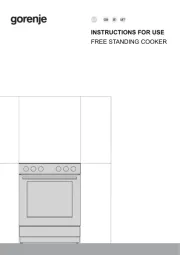
4 September 2025
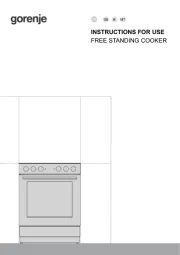
4 September 2025
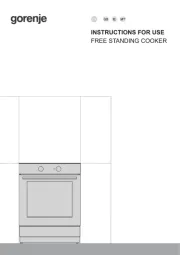
4 September 2025
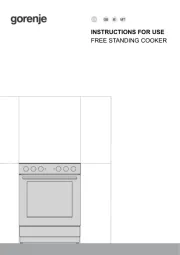
4 September 2025
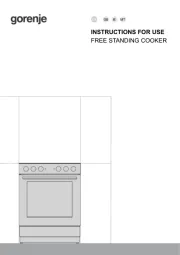
4 September 2025
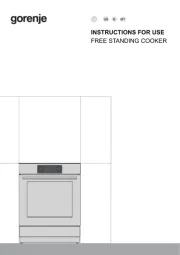
4 September 2025
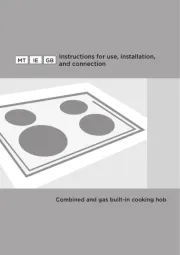
4 September 2025
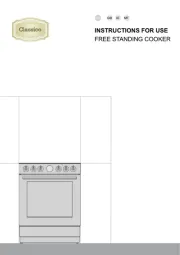
4 September 2025
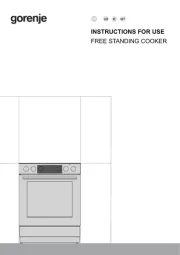
4 September 2025
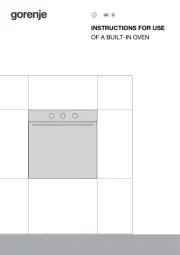
7 Augustus 2025
Handleiding Fornuis
- Edesa
- Palson
- Medion
- Hotpoint
- FAURE
- Alluserv
- Haier
- Bora
- Igenix
- Philips
- Atosa
- Thermarest
- Sauter
- Sinbo
- Wolkenstein
Nieuwste handleidingen voor Fornuis
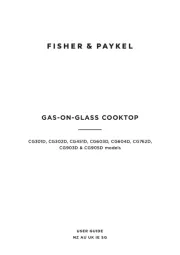
12 September 2025
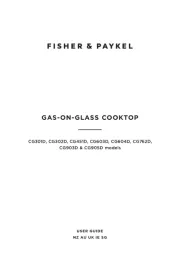
12 September 2025
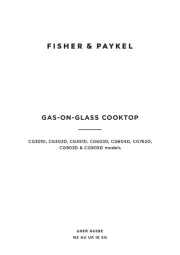
12 September 2025
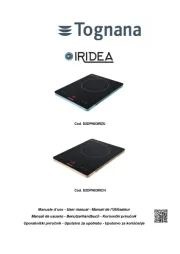
10 September 2025
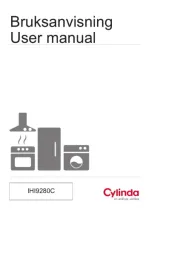
9 September 2025
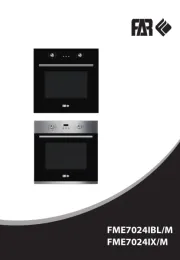
9 September 2025
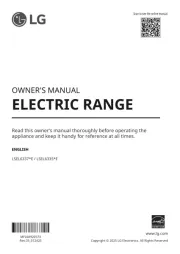
9 September 2025
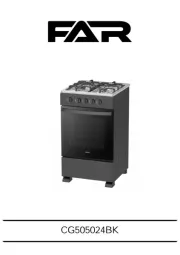
9 September 2025
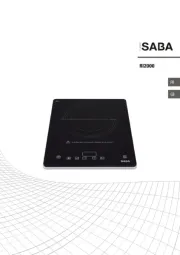
9 September 2025
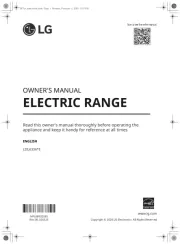
9 September 2025